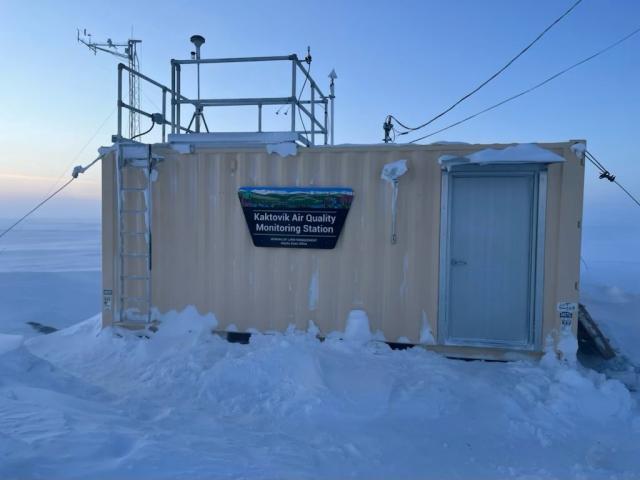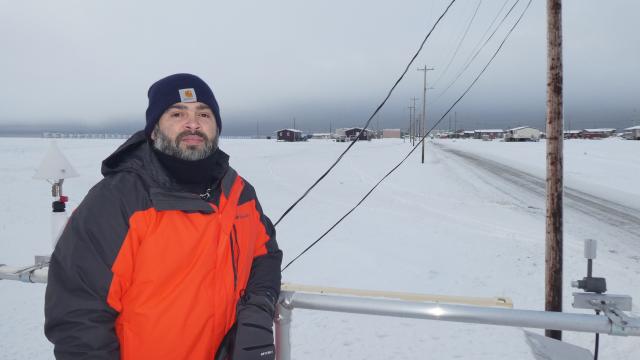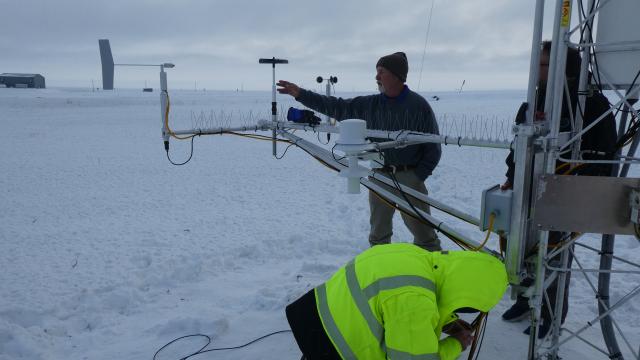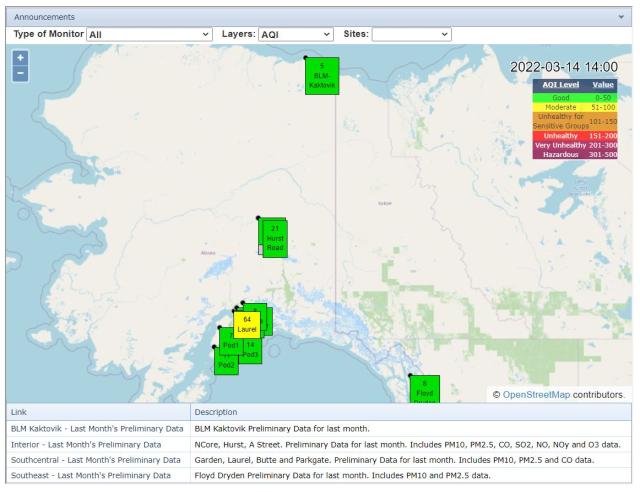You are viewing ARCHIVED content published online before January 20, 2025. Please note that this content is NOT UPDATED, and links may not work. Additionally, any previously issued diversity, equity, inclusion or gender-related guidance on this webpage should be considered rescinded. For current information, visit https://www.blm.gov/blog.
New air quality monitoring station provides clear data in Arctic
A new Air Quality and Weather Monitoring (AQM) Station funded and maintained by the Bureau of Land Management (BLM) has revealed pristine air quality in the remote Arctic Native Village of Kaktovik and will prove valuable to scientists for years to come.
In 2021, logistics, outreach and funding fell into place for the BLM to plan coordinate ship and install the Kaktovik AQM Station. The state-of-the-art station could have a lifespan of up to 25 years. It will support long-term research in the Arctic and may be used later to test the accuracy of new developments in AQM technology.

BLM Alaska seized the opportunity to do something new in this area of the Arctic, get baseline data on air quality before any potential development ever happens. It’s also a unique project for the BLM to undertake – not just because of the challenges of getting a shipping container delivered to the only community within the Arctic National Wildlife Refuge (ANWR). As BLM Alaska’s Air Quality Expert, V.J. Maisonet-Montanez explains, usually the State of Alaska’s Department of Environmental Conservation (DEC) manages air quality monitoring sites in the Last Frontier – and that’s only if an area has demonstrated or has voiced concern about issues with their air quality. For example, winter air quality in Fairbanks is usually impacted by wood burning stoves. The Arctic is home to just one other AQM site.

“At Nuiqsut, the air quality conditions are shared with the BLM and DEC annually,” Maisonet-Montanez describes the partnership in place with a current BLM permit holder. “In the last couple of years there’s only been one notable day of poor air quality which was likely due to high winds blowing dust around.”
Maisonet-Montanez has years of experience monitoring air quality for the Bureau of Ocean Energy Management and before that, he did this work for the State of Georgia. Installing a station in one of America’s most remote communities meant overcoming unpredictable factors including a narrow Arctic Sea shipping window and safely accessing a rural village during the coronavirus pandemic.
“It was kind of a surprise to see it all come together,” said Maisonet-Montanez. “Until I got to Kaktovik in October, this was all a paperwork exercise.”

Coordinating closely between contractors, other federal and state agencies, and leaders in Kaktovik paid off. The shipping container, which houses most of the monitoring equipment, made it to the Arctic before the coasts were blocked by sea ice. Under strict public health protocols, Maisonet-Montanez and a few colleagues were permitted to visit the community of less than 300 people. The staff got the shipping container moved to its new semi-permanent home, and all the equipment set up and audited by DEC. The familiar buzzes and sounds of the station take Maisonet-Montanez back to his early days as a scientist and are groundbreaking for this region.
“We didn’t know what to expect. Whether there was a pollution issue or black carbon. Now that it has been running for the last couple months, we see the air is pristine. It is reassuring to the community that their air quality is great.” Maisonet-Montanez remembers the anticipation of getting a data read and highlights early data trends. “The only thing we know of that we’ve picked up on is trash burning days. If the wind blows just right, we can pick that up. It’s a blip we wouldn’t normally see.”
Though the station is funded by the BLM, the data is available on the DEC website where the rest of Alaska’s air quality reports are hosted. Data made available by the BLM adds more information on air quality and weather trends for the public and scientists alike.

Melinda Bolton, Public Affairs Specialist
Related Stories
- Progress on Public Lands: BLM 2025 Trump Administration Accomplishments | January 20 - December 31, 2025
- Using science to uncover mysteries of the Mesa archaeological site in Alaska
- BLM delivers on administration priorities
- Phosphate mining in Florida sustains supply chains, sets standards
- Oklahoma Field Office staff teach Petroleum Engineer Technician course
Office
222 W 7th Avenue #13
Anchorage, AK 99513
United States
